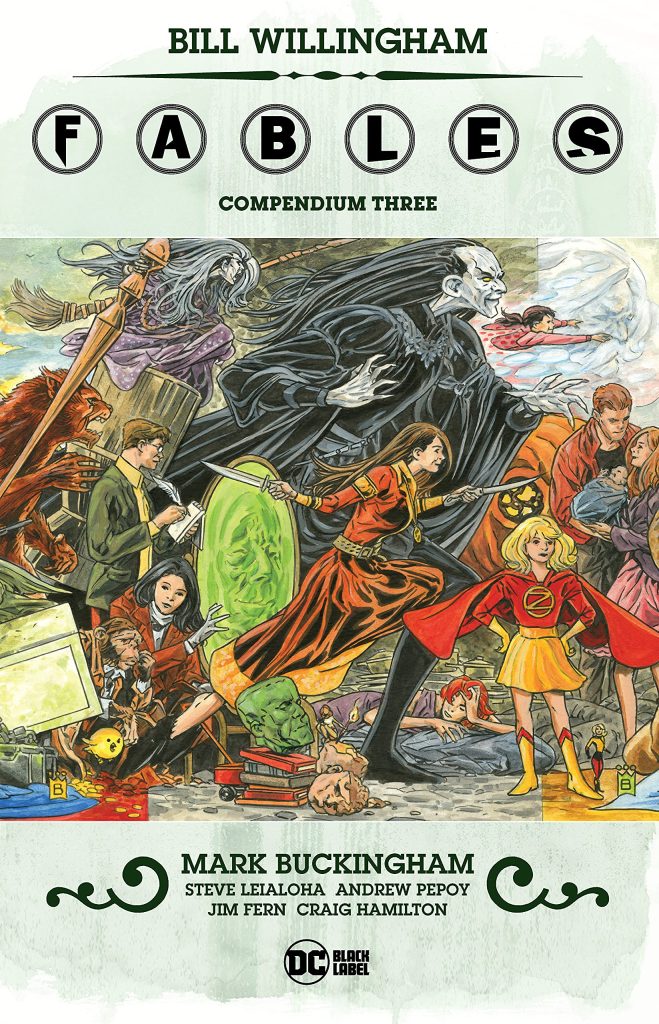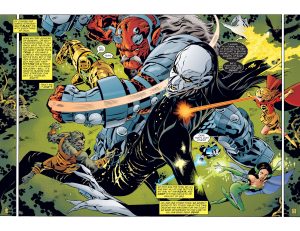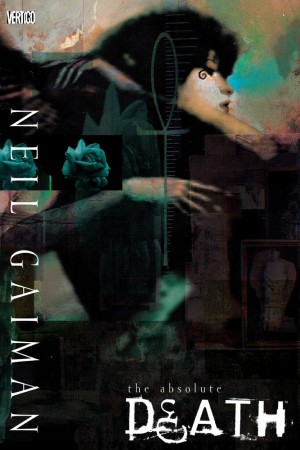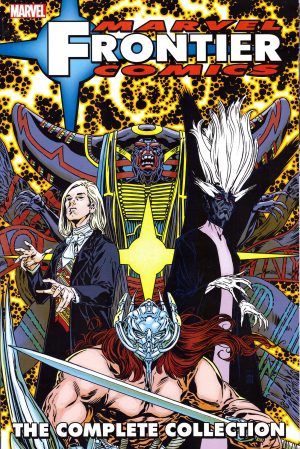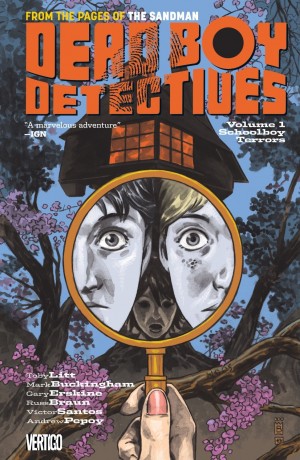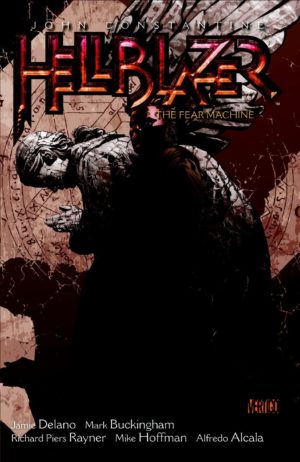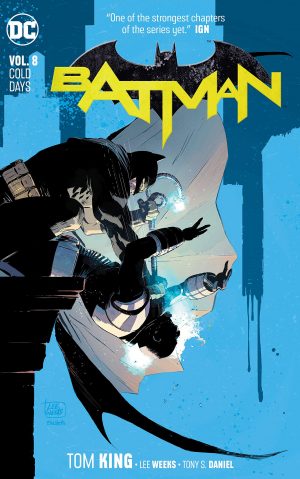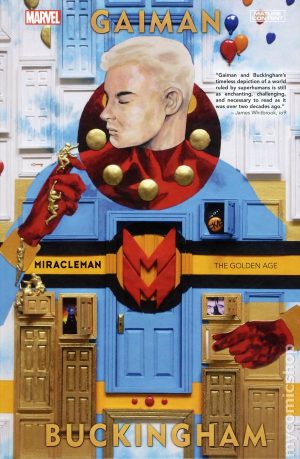Review by Frank Plowright
There’s a dip in quality for this third Fables Compendium, which is the curse of attempting to be exhaustive when compiling the extent of the Fables world. Jack of Fables was central to the earliest stories, his scheming rogue personality appealing enough to spin him off into his own series. This wasn’t written by Bill Willngham, and frankly isn’t as good. However, people missed Jack in the main series, and perhaps in response to that Willingham and Matthew Sturges constructed the nine chapters and epilogue of The Great Fables Crossover, and that occupies just under a third of this compendium.
It may not have been the case, but the chaotic, rambling story reads as if it’s been plotted down the pub one night, and while Fables doesn’t lack for comedy moments, it’s a different type of comedy than the surreal, seat of the pants slapstick applied to Jack. It seems much longer than it is, and the lasting change is Stinky the badger’s transformation into a more rounded personality.
Thankfully there’s better to come, but it’s not in what was originally issued as Werewolves of the Heartland. It’s conceptually strong, and there are thrills to Bigby having to assert his dominance over a pack of werewolves, but events continue too long, and it’s truly a clash of styles between the art nouveau-influences of Craig Hamilton and the more ordinary Jim Fern.
The remainder is up to the standards expected from Fables. Anyone expecting the series might drift after the major threat was dealt with in Compendium Two will be pleasantly surprised as Willingham builds new menace Mister Dark into an imposing figure who even gives the witches pause for thought. His troubling of the Fables community story was presented as Witches and Rose Red in trade paperback, both compelling dramas with the focus on different characters, and Willingham even manages to throw in two further menaces on the same power level.
So why is Fables so successful and so satisfying? Using characters the significant majority of readers know from childhood provides an instant connection even if what Willingham constructs from them are only tenuously connected to our impressions. As a writer Willingham spots story opportunities that others wouldn’t see, and while page-turningly commercial, his plots feed from the characters. It means even the idea of superheroes, as used in Super Team, can slot in when the immediate reaction is that it’s too far removed from what makes Fables tick. The final piece of the jigsaw is the phenomenal art of Mark Buckingham whose standards were high from the start, but who’s grown with the series and can incorporate nods to other styles while keeping his art consistent. He channels his inner Kirby for the sample art.
Finally, in other series the fill-in is to be dreaded. Willingham knows this, so selects his collaborators carefully, and even if the ensuing artistic interpretation isn’t to all tastes, it’s always interesting and almost always feeds into the bigger picture. Numerous artists work on short strips illustrating the answers to questions readers have asked.
Follow the links for greater detail about plots, the last trade included here being Inherit the Wind, and the content is also available in hardcover spread over Deluxe Edition Books Ten, Eleven and Twelve. Fables Compendium Four completes the original run.
